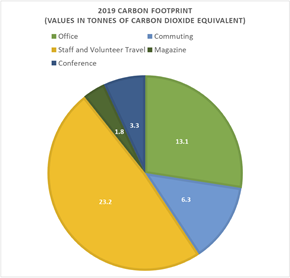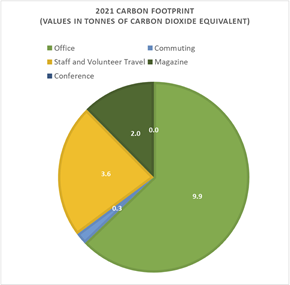It’s February and CIP can once again boast that it has achieved carbon neutrality for the previous year.
Back in 2019, the year of CIP’s centenary, it was announced that CIP was committing to establishing and implementing a carbon-neutral strategy in 2020. Not only was that strategy developed but after an audit of CIP’s carbon footprint, neutrality was achieved for 2019 through the purchase of credits of Gold Standard-certified projects to offset CIP’s equivalent amount of greenhouse gas (GHG) emissions that year.
Since then, CIP has continued to track its emissions each year in the following categories: office space, paper and printing, employee commuting, magazine production and distribution, conference, and volunteer and staff travel. As part of the strategy, CIP is identifying options to reduce and offset emissions related to the annual conference, as well as possible means of achieving future reductions in CIP’s total emissions.
CIP has seen a significant reduction in emissions during the last two years, with a decrease of 67% between 2019 and 2021. This was in large part due to a near (but not total) elimination of volunteer and staff travel in 2020 and 2021 due to the pandemic. As the world eventually emerges from the pandemic, CIP will strive not to go back to “business as usual”, but to instead seek opportunities to keep GHG emissions low while maintaining (or increasing!) organizational impact.
As a profession, planners have long been vocal about the importance of addressing climate change and the issues captured in the United Nations’ 17 Sustainable Development Goals. As Canada’s national institute for planners, CIP is committed to embedding these same priorities into its operations and amplifying its members’ calls to action to plan for a sustainable future.
Then

Now

